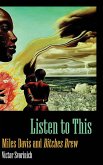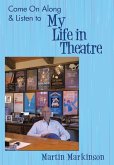This dissertation uses the SITI Company s mission creating new work, training young theatre artists, and international collaboration as a basis for situating the company within theatre history. Starting with the foundations built by Artaud, Brecht, and Copeau, early 20th Century artists influenced by Asian performance techniques, followed by the Wooster Group, Théâtre du Soleil, and Complicité, late 20th Century collaborative theatre companies which create new works, this work offers a context for understanding SITI s style where movement assumes as important a role in performance as text. This work not only offers an overview of SITI s unique actor-training (the Viewpoints training and the Suzuki Method) and their underlying philosophies, but also provides a context for physical actor-training by looking at Meyerhold, Decroux, and Grotowski. Finally, this work examines SITI s creative process that eschews the hierarchies found in traditional theatre, by looking at four performances and how they were created (Bob, Room, Score, and Death and the Ploughman) and providing examples of how SITI's training lends itself towards developing choreographic movement.
Bitte wählen Sie Ihr Anliegen aus.
Rechnungen
Retourenschein anfordern
Bestellstatus
Storno








